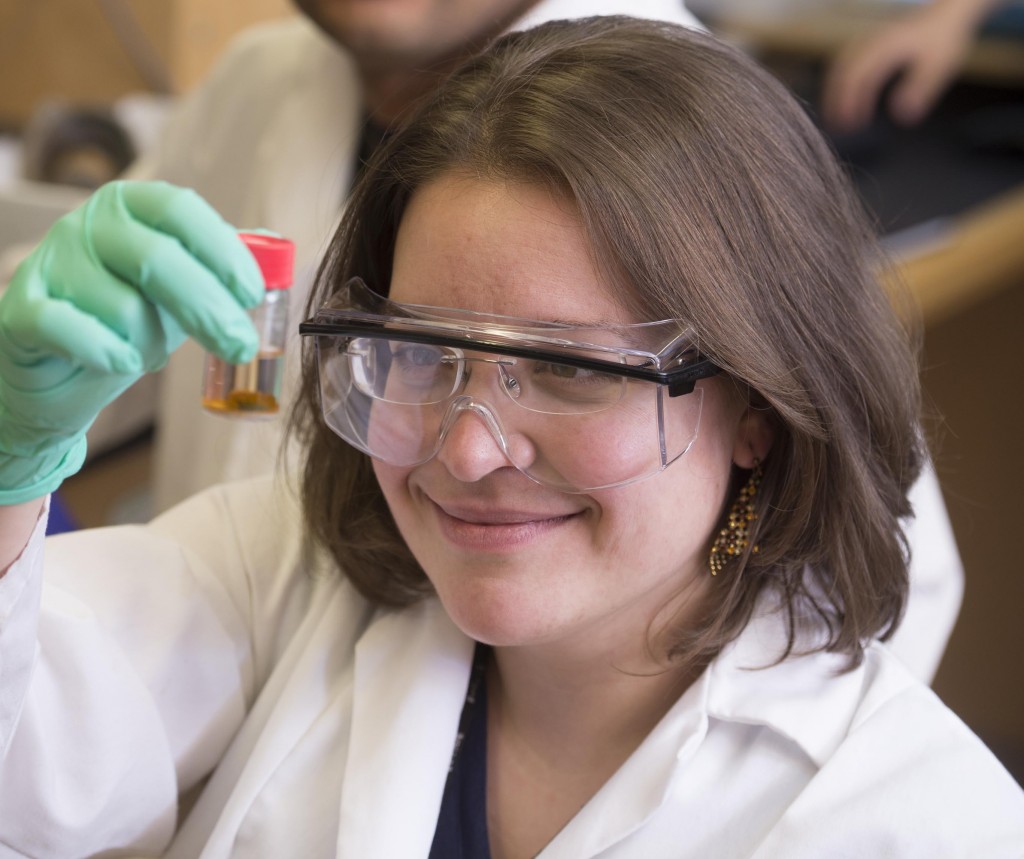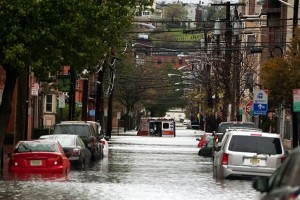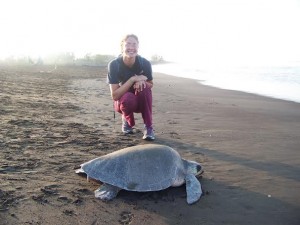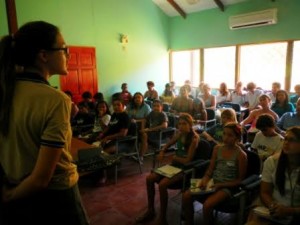
Marion Emmert checks the progress of a chemical reaction that will recover the valuable metals found in electric car engines. Source: WPI
When you first enter the office of chemist Marion Emmert, not only will you see bookshelves of academic chemistry textbooks, but also a miniature rubber duck, a goat plushie, and cartoon strips. Emmert especially prizes her goat stuffed animal, Gompei, who also happens to be the university mascot. She won him in a faculty contest. “I’m very competitive,” she says with a mischievous grin.
Emmert is an associate professor at Worcester Polytechnic Institute, a university that specializes in real-world applications of science and engineering. In September, Professor Emmert and postdoctoral fellow H.M. Dhammika Bandara became some of the first people to successfully recycle the rare earth elements (REEs) inside of broken electric/hybrid car motors. REEs are the magic ingredients inside many modern technologies. In electric cars and wind turbines, REEs act as powerful magnets that make the engines run more efficiently. REE magnets are irreplaceable, because they are as much as five times stronger than other magnets. REEs also increase the computing abilities of laptops, phones, and tablets, and are used in diverse fields such as medicine and military defense systems.
The development of REE recycling is especially important because the U.S. needs its own domestic REE supply. During the past fifteen years, China has controlled over 86% of the REE market, because it artificially keeps REE prices too low for other nations to compete. Securing domestic U.S. production of REE resources is a key driver of Emmert’s work. China’s control of REE prices is essentially a power play, she explained. By maintaining its REE monopoly, China can restrict U.S. access to these critical resources. This occurred in 2011, when China cut its REE exports by 40%. In the space of a year, REEs prices increased by as much as 600%. “We [the U.S.] didn’t have any solutions,” Emmert said bluntly. “We didn’t even have the knowledge or the technology to address this [lack of REE resources].” That’s a scary thought, especially because REEs are so important for many different technological applications.
Emmert’s new technique could allow the United States to become a more competitive, self-reliant player in the REE industry, independent from the volatile REE prices of Chinese suppliers. Even though the recycling process involves a series of complex chemical reactions, Emmert is used to explaining her research to a general audience. Here’s the gist: electric and hybrid vehicle engines possess valuable amounts of REEs, but they’re difficult to separate from the other metals in the engine. However, unlike steel or copper, rare earth elements dissolve quickly in certain acids, such as hydrochloric acid. By soaking the engines in these acids, Emmert can isolate the REEs from the rest of the recycled engine. This process works so well that Emmert’s team can recover over 80% of the REEs in the electric car engines. The recovered REEs are 99.9% pure.
For Emmert, finding a new source of REEs is not only about competing in a monopolized REE market – it’s also about recycling them in a way that minimizes environmental and human health impacts. “This is dear to my heart,” Emmert said. “People don’t always understand. To be environmentally friendly, it’s not just about safety for nature, but also for the people. People are part of the environment.” In contrast to many scientists’ energy-intensive recycling methods and use of dangerous concentrations of acids to recover valuable metals, Emmert’s recycling process minimizes waste, increases energy efficiency, and reduces safety hazards. For example, Emmert designed the REE recovery process so that waste by-products such as corrosive acids could be reused, instead of ending up in a landfill. She also used these acids in low quantities, so as not to endanger the humans handling the products. “It’s really cool. [Recycling REEs] is so simple [and safe] that you could do it in your house! But I wouldn’t suggest it,” she added quickly.
On its own, Emmert’s REE recycling method is remarkably environmentally friendly. However, perhaps the greatest advantage of the new recycling process is its potential to reduce the environmental impacts associated with REE mining. Mining currently supplies all of the world’s REE demand, but it also produces enormous amounts of pollution: just one ton of REEs produces over 66 tons of waste! While much of this waste is composed of waste rock, significant portions of it are either radioactive or contain dangerous waste acids. In fact, the U.S. shut down its largest REE mine partly because it leaked hundreds of thousands of gallons of radioactive wastewater into the surrounding environment.
By utilizing recycled REE, the U.S. can lessen its reliance on virgin materials. Most importantly, ‘mining’ electric car engines for REEs does not produce radioactive waste. Using Emmert’s approach, even the acids needed to recycle REEs would be reused. Recycling offers a low-energy, low-waste source of REEs that reduces the need for environmentally destructive mining operations. And while electric/hybrid vehicle engines recycling alone cannot provide the U.S. with all of the REEs it needs, the same recycling process can be applied to other engines, such as wind turbines, which can contain over 800 pounds of REEs each.
Before Emmert patented her recycling process in September 2015, mining was the only way to acquire REEs. She hopes that within a few years, the U.S. will construct the first commercial REE recycling facility based on her research. But there are two major challenges. First, the recycling process has only proven to be successful in a small-scale, laboratory setting. Recycling thousands of engines on a daily basis will pose new technological and implementation challenges. Second, REE recycling lacks commercial viability. Between 2002 and 2013, the price of REEs varied greatly, from $12 to nearly $95 per kilogram. With such volatile prices, can REE recycling succeed in the real world? According to Emmert, the fickle nature of the prices is precisely the reason why companies should invest in recycling technology today. Businesses need to diversify their source for REEs. That way, if one source dries up, the company can rely on other suppliers. Although recycling may be more expensive in the short-term, Emmert argues that REE recycling can help preserve business sustainability for decades.
Whether for economic sustainability, U.S. resource independence, or environmental preservation, REE recycling offers an important alternative to the status quo. “It’s in everyone’s best interest to diversify the economy,” Emmert said. Recycling may be the REE industry’s next great breakthrough in terms of both economic and environmental sustainability.


















